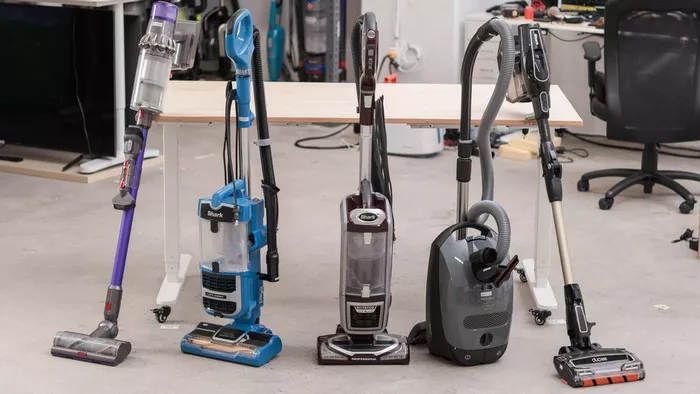Vacuum cleaners are essential tools for maintaining cleanliness in homes and businesses. At the heart of their effectiveness lies their power. Vacuum power refers to the strength of suction generated by the cleaner, which directly impacts its cleaning performance. Understanding this power is crucial for selecting a vacuum that meets your specific cleaning needs.
Understanding Power Ratings
When it comes to vacuum cleaners, power is often measured in watts, amps, or air watts. Each rating provides insight into the vacuum’s capabilities:
1. Watts: Watts indicate the electrical power consumed by the vacuum cleaner. A higher wattage typically means more suction power, although it’s not the only factor to consider.
2. Amps: Amperage measures the electrical current flowing through the vacuum. While higher amperage can suggest more power, it’s not always a reliable indicator on its own.
3. Air Watts: Air watts are a measure of the suction power created by the vacuum’s motor. This rating considers both airflow and suction, providing a more accurate representation of cleaning ability.
Understanding these ratings empowers consumers to make informed decisions based on their cleaning requirements.
Consider the Type of Vacuum
Different types of vacuum cleaners have varying power needs. For instance:
1. Upright Vacuums: Upright vacuums often have higher power levels to efficiently clean carpets and larger areas.
2. Canister Vacuums: Canister vacuums may have slightly lower power but offer versatility for cleaning stairs, upholstery, and hard-to-reach places.
3. Stick Vacuums: Stick vacuums are lightweight and convenient but may have less power suited for quick cleanups rather than deep cleaning.
Choosing the right power level depends on the type of vacuum that best suits your cleaning preferences and environment.
Surface Type and Cleaning Needs
The type of flooring and specific cleaning needs play a significant role in determining the ideal power level:
1. Carpets: Deep-pile carpets require stronger suction to lift embedded dirt and debris effectively.
2. Hardwood Floors: Hardwood floors benefit from gentler suction to avoid scratching or damaging the surface.
3. High-Pile Rugs: Rugs with high piles may need adjustable power settings to ensure thorough cleaning without damaging fibers.
By matching power to surface type, you can achieve optimal cleaning results while preserving the integrity of your floors.
Balancing Power and Energy Efficiency
While high power is desirable for effective cleaning, it’s essential to balance performance with energy efficiency:
1. Energy Consumption: Higher-powered vacuums tend to consume more energy, leading to increased operating costs.
2. Noise Level: Powerful motors may produce more noise, which can be disruptive in quiet environments.
3. Environmental Impact: Energy-efficient models reduce carbon footprint and contribute to sustainability efforts.
Choosing a vacuum with the right balance of power and energy efficiency ensures effective cleaning without unnecessary resource consumption.
Additional Features Impacting Cleaning Performance
In addition to power, other features contribute to overall cleaning performance:
1. Brush Rolls: Agitator brushes help dislodge dirt and debris from carpets, enhancing cleaning efficiency.
2. Filtration Systems: Advanced filtration captures fine particles and allergens, improving indoor air quality.
3. Attachments: Tools like crevice tools and upholstery brushes extend the vacuum’s versatility for various cleaning tasks.
Considering these features alongside power levels maximizes the vacuum’s effectiveness across different surfaces and cleaning scenarios.
User Reviews and Recommendations
Real user experiences offer valuable insights into a vacuum cleaner’s performance:
1. Suction Strength: Users often highlight the importance of powerful suction for thorough cleaning, especially in high-traffic areas.
2. Durability: Long-term users can assess how well a vacuum maintains its power and overall performance over time.
3. Versatility: Recommendations from experts and users alike can guide consumers toward models known for their adaptability to diverse cleaning needs.
Exploring user reviews can help narrow down choices and identify vacuum cleaners that consistently deliver on power and performance expectations.
Maintenance and Longevity
Regular maintenance is essential for preserving a vacuum cleaner’s power and longevity:
1. Filter Cleaning: Clogged filters restrict airflow, reducing suction power. Regularly cleaning or replacing filters ensures optimal performance.
2. Dust Bin Emptying: Full dust bins impede suction and strain the motor. Emptying the dust bin after each use prevents loss of power.
3. Blockage Checks: Periodically inspecting hoses and brush rolls for blockages prevents airflow restrictions and maintains consistent suction.
By incorporating these maintenance practices into your routine, you can prolong your vacuum cleaner’s lifespan and maintain its cleaning efficiency.
Safety Considerations
While high-powered vacuum cleaners offer superior cleaning capabilities, they also pose potential risks:
1. Surface Damage: Excessive suction power can damage delicate surfaces like curtains, upholstery, or hardwood floors. Adjusting power settings or using appropriate attachments mitigates this risk.
2. Injury Hazards: Powerful vacuums may pose a risk of injury if not used properly, especially when handling heavy machinery or navigating stairs. Following manufacturer guidelines and exercising caution during operation minimizes these risks.
Prioritizing safety alongside cleaning effectiveness ensures a positive user experience without compromising on protection or performance.
Conclusion
Choosing the right vacuum cleaner power level requires careful consideration of various factors, including surface type, cleaning needs, energy efficiency, and safety. By understanding power ratings, matching them to specific requirements, and incorporating user feedback and maintenance practices, consumers can make informed decisions that enhance cleaning performance and maximize longevity. Whether tackling carpets, hardwood floors, or upholstery, finding the perfect balance of power ensures a cleaner, healthier living environment for years to come.

